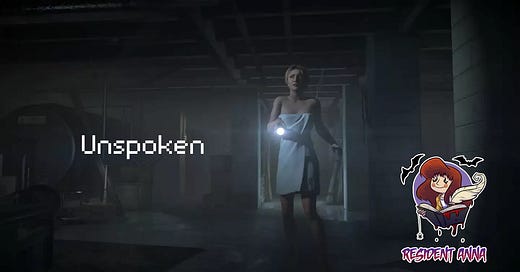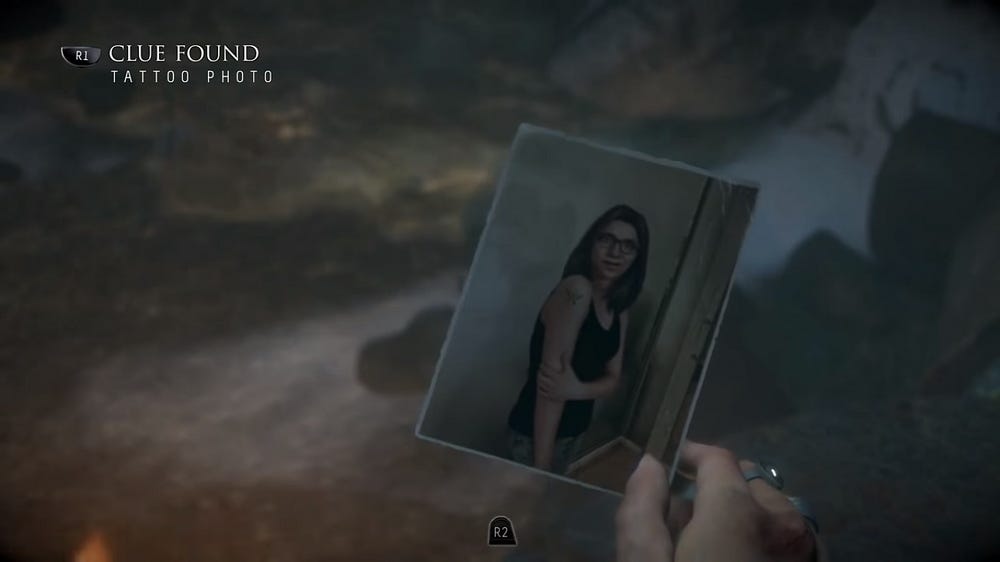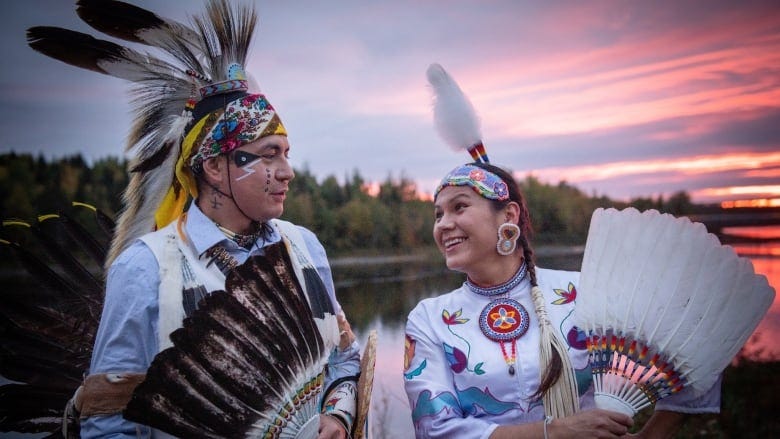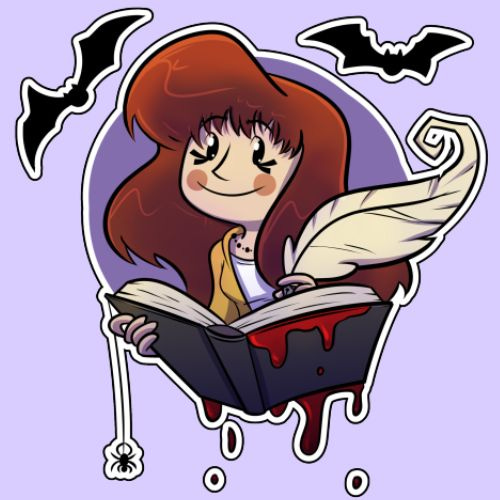Unspoken
Examining the horror game legacy of a particular creature, featuring Supermassive's "Until Dawn."
RESIDENT ANNA IS BACK, BABY.
Thanks so much to everyone who has read in the past, are just joining us now… just thanks for being here. :)
Content Warnings: this article discusses the historical and current struggles and resilience of Native American people, meaning that there will be mentions of colonization, genocide, and ethnic cleansing. There is also mention of cannibalism and death(s) of minors (and miners!).
This game also includes spoilers for Until Dawn (2015, 2024).
Overview
2015 was truly a simpler time. It was a time of Vine, of matte cream lipsticks in every shade and hue, and of Joanna Newsom’s third studio album Divers. It was officially the halfway point of the 2010s, so linear horror games were O-U-T out: it was the era of the Dear Esthers, the Amnesias, and of games with a whopping 256 possible outcomes.
Yes, you read that correctly. 256.
Until Dawn (2015) by Supermassive Games wasn’t shy about flexing its reactivity from the jump. Built from the chaos-theory concept of the “butterfly effect,” the game was designed to provide a breadth of potential outcomes for extensive replay value. This, coupled with the classic “teen slasher flick” horror setup and celebrity stunt casting to boot, would prove to be a hell of a formula that would establish this title as horror game cult-hit royalty.
Until Dawn takes place in the fictitious location of Blackwood Mountain, located somewhere in the province of Alberta, Canada, on the ancestral territory of the Cree (Néhinaw) First Nation. The mountain is both treacherous and craggy, and the only reliable way to get on or off of it comes in the form of a rickety cable car. The mountain also has a rather tragic and unlucky reputation historically. Apart from housing the crumbling remains of a sanitarium (I’m from the Appalachian mountains, I get it) and many abandoned mineshafts equally-tinged with tragedy: a pair of sisters disappeared about a year ago.
The Washingtons practically owned that mountain, and although the local population dried up alongside the mining industry following an accident, the family still has a lodge there. The game surrounds a group of friends who take an annual winter trip together to get away from everything and bask in the splendor of Canadian rich-kid-dom. But when a prank goes wrong and sends twin sisters Hannah and Beth Washington running into the woods… no one ever saw them again. Due to the rugged terrain, search parties were unable to locate the Washington twins, and they quickly went from being missing persons… to assumed dead. Their bodies were never recovered.
Fast forward a year, and Josh Washington, the brother of the two missing girls, invites the group back to the lodge. Everyone feels weird about it considering what happened last time, but eventually they accept. But there’s no way to go back to “normal” again after something so tragic, no matter how hard you may try for the sake of appearances.
But that’s not the only hint that something is very, very wrong on that mountain.
An Insatiable Hunger
The English word “w*ndigo” (I will be censoring the word out of respect for the traditional Omàmiwininì/Algonquin taboo that its name is not to be spoken for risk of drawing its attention), is believed to be a transliteration of its word from the Ojibwe language. This particular spirit is one of the most reviled in the folklore of Algonquin-speaking Nations, as it is characterized by its insatiable hunger to the extent that it makes those possessed consume other humans.
If you’re familiar with Until Dawn, you know that these creatures take a rather large role in the plot. And if you’re a horror-or-otherwise-video-game-enjoyer in general, you likely have already come across this creature in another piece of media. Just to name a few…

As depicted in Hannibal above: you’ve likely seen an artistic depiction of a w*ndigo as having antlers of some variety (be they deer, elk, etc). And while that’s a bold artistic choice, it’s actually completely devoid of folkloric basis. The addition of horns is believed to have originated from the novella The W*ndigo by Algernon Blackwood, which was published all the way back in 1910. Fun fact: the author of this famous novel also gives the mountain in Until Dawn its name.
Blackwood was a English novelist renowned for his “weird” fiction, and if there’s one thing English people love, it’s colonizing things that aren’t theirs. The w*ndigo is ancient and formidable in Algonquin folklore for good reason - it’s understandable that those beyond that identity draw an interest in it. But when the culture it belongs to has been colonized, systemically oppressed, and has withstood ongoing genocide, the ethics of further colonizing this creature by non-Natives for a scary story (or AAA video game for that matter) become much more murky.
But before we get ahead of ourselves, let’s take a look at how w*ndigo manifest in Until Dawn.
What Big Teeth You Have
W*ndigo aren’t the only monsters on that mountain (no full spoilers here), but they are certainly the more supernatural of the bunch. The known origin of these creatures on Blackwood Mountain goes back to the mines in the area - or rather, they can be linked to a mining disaster which occurred in the 1950s. The collapse of a tunnel due to a structural failure trapped 30 workers deep within the mines. The game says that there were 30 men said to be working in the area, but by the time they were rescued, there were only about 12. The implication of course is that they resulted to cannibalism in order to survive.
Indigenous legends vary about the exact mechanism of how a w*ndigo comes to be, but according to Cree legend within the game, individual humans are able to be overcome by the spirit and “transform” into a w*ndigo with the consumption of human flesh. The game also says that the band of Cree who lived on the mountain left long before thee accident, primarily driven away by the expansion of the mining industry and destruction of their land. The Cree warned that the settlers and their mines have disgraced the mountain and subsequently unleashed a curse. So it would seem.
Since it was the 2010s and unarmed horror protagonists were en-vogue, there’s no way to “fight” w*ndigos in Until Dawn even when they do make their presence known. But due to their relatively poor eyesight, all the player can do is try to hold perfectly still during an encounter and hope that the creature doesn’t perceive them.
And this brings us back to the Washingtons.
Hannah and Beth’s bodies were never recovered because the two girls fell into an open mineshaft. Fortunately (or, perhaps, unfortunately), Hannah survived the fall. Her sister Beth, on the other hand, wasn’t so lucky. Now hopelessly trapped with nothing but her sisters’ corpse to keep her company, Hannah faces a terrifying prospect: she has to wait to be found. Luckily, she knew that her friends saw her run into the forest, so hopefully someone will find her soon… right?
Only, much like those miners once trapped within that same mountain, help doesn’t come in a reasonable amount of time. Or in Hannah’s case: ever. Desperate to hold out as long as she can, Hannah is driven to do the unthinkable in order to survive. As indicated by the pages of her journal, it’s unclear how much of her decision to consume her sister’s body was purely organic or spurred on by “Makkapitew” (Algonquin for “one who has big teeth”), believed to be the strongest/fiercest of the w*ndigo.
Regardless of the mechanism, Hannah has committed the associated sin, and thus her own transformation into a w*ndigo is cemented. When she appears in this form in-game, she indeed larger and stronger than the others of her kind, believed to be from Makkapitew’s influence. In this new state, Hannah hardly appears like she used to with her elongated limbs, grey skin, and emaciated silhouette, but we can tell that it’s her because of the thematically-apt butterfly tattoo she sports on her right shoulder.
Once the characters realize that the largest of these terrifying creatures is their friend, it’s almost hard not to feel some degree of empathy for what was once Hannah even as she stalks you across the mountain. These friends (who are, honestly, pretty terrible friends) are the entire reason that she ended up like this in the first place. And now they have to deal with not only the consequences of their own actions, but the consequences of the entire history of the Washington family and the destruction that their colonization wrought upon the area.
And it’s with this in mind that we consider the gravity of this creature in this context.
Decolonizing the Genre One Monster at a Time
And you might be like: OK, Anna. But you said so yourself. You’re not Native. And you’re right. I’m not. But quite frankly? This is a conversation that us White horror writers need to be having. I called this article Unspoken for multiple reasons! White horror creators need to be asking: when is it okay to utilize folklore elements from historically marginalized groups when you are a White creator?
From research into the Surrey-based team that made Until Dawn, I was unable to tell if the team consulted with (or even just completely hired) Cree or greater-Algonquin people to work on this game. There are many “special thanks” listed within the credits, however I do not see anyone listed as a consultant, and was unable to find any press or interviews which detail the extent to which the studio may have collaborated with Algonquin people on the project. And unfortunately, there are some telltale signs that this might not have been the case: primarily manifesting as a strange mishmash of Native American cultural elements from across the continent which do not align with the Cree setting.


However, it’s clear throughout their depictions of the w*ndigos that they did their due diligence on research, as evident by their emaciated bodies and lack of horns. But research, while critical and a gesture of good faith, pales in comparison to the rich context that comes with lived experience, and full understanding of the associated taboos and motifs that accompany these often highly-complicated facets of culture.
However, the issue arises that if the team themselves are not Native, but are utilizing a facet of Native folklore in order to develop (and most importantly: profit) a video game, at what point do developers play a role in the ongoing colonization of Native people? At what point do we as White video game developers need to consider if we are the Washingtons on that mountain?
And more importantly: what do we do about it?
Solution A:
In January 2024’s State of Play, it was announced that Until Dawn would be getting a remaster alongside the announcement of a live-action movie adaptation. Remasters and remakes are fine and good, but my initial reaction to the movie was “I hope it’s being made with actual assistance from Algonquin people.”
Solution A to the “but I want to make something using a w*ndigo or sk******er” is: hire Native people. And I can speak on this from experience working previously on a Western. It was the act of working with Native contributors to the project that ultimately helped it find its direction in a very troubled genre.
And it’s easy for White horror creators to brush off the input of their indigenous contemporaries due to the false but unfortunately common idea that Native American people simply do not live here anymore. In fact, a study from the Reclaiming Native Truth Project, an advocacy group wanting to dispel common misconceptions and incorrect narratives about Native people, found some wild statistics.
Results of the study as reported by the Great Falls Tribune:
40% of survey respondents did not believe Native Americans still exist.
59% agreed the United States committed genocide against Native Americans.
36% of people believe Native Americans experience significant discrimination.
Native people of North America are still here, and it’s my firm opinion that if folklore from a marginalized group is going to be utilized for the development of a commercial product - which, unfortunately, video games are both art and a commercial product - the people that the figure “belongs” to should not only be consulted but paid for their involvement.
I hope that the upcoming Until Dawn film adaptation does involve Native contributors, as it’s a huge gesture to do right by the culture which has faced exploitation: from their land to their tradition. There are many talented Native writers, directors, actors, and game developers out there - hire them. Pay them well for their expertise. Let them lead. Listen to them. It’s that easy.
Solution B:
If you are not working in a setting where the creature or monster you want to make the antagonist doesn’t need to be of a marginalized culture that yourself or members of your dev team are not apart of… consider an alternative creature. There are terrifying creatures all over the world, from all other cultures.
I’m from the Appalachian mountains for pete’s sake, we’ve got weirdos for days. Go further back in time and I’m Gaelic. Again: weirdos for days. I can and have written about creatures from these backgrounds within my own work as a horror writer, and I’ve had the Nuckelavee on deck for months now. When there are already so many weird little creatures from every culture all over the world… why appropriate someone else’s?
Conclusion
Until Dawn is undeniably a great horror game. While it’s definitely got more of a cult-hit status, it was and is still well-received by casual and dedicated horror fans alike. With the upcoming remake (which is out this Friday) and a movie in the near future, I just can’t help but wonder what, if anything, was done in an attempt to authenticate the representation. And if the strong anti-Roma sentiment in Supermassive’s 2022 spiritual successor The Quarry is anything to go by, I unfortunately don’t have my hopes up.
As I’ve spoken about many times on this blog, horror as a genre provides us with opportunities to confront the very real atrocities and anxieties of our world. The genre is built upon ethical considerations, speaking truth to power, and exploring that which otherwise makes us want to cover our eyes and ears with our hands. Not taking the opportunity to hire Native developers to help tell this story and provide the sort of depth that only lived experience can provide… just feels like a missed opportunity.
I will absolutely be checking out the remaster of Until Dawn. But I hope that Supermassive acknowledges the areas they could have improved and did so in good faith. Because unfortunately: the past is beyond our control.
Thanks for reading! Did you know that November is Native American Heritage Month here in the United States? Want to learn more but not sure where to start? I gotchu.
Find out whose land you’re on! This interactive map shows a list of all known Native people in the Americas and beyond. Learn about those who lived here long before us - see if there are any ways you can support them in your local area: with your time, money, or otherwise.
Learn about the LANDBACK movement. There’s a growing movement of Natives and allies banding together to advocate for the returning of traditional Native lands back to Native stewardship to restore sovereignty. Check out their manifesto and see if there’s anything you can do to help in your local area!
We gotta look out for each other out here. Welcome back, Resident Anna fam.














